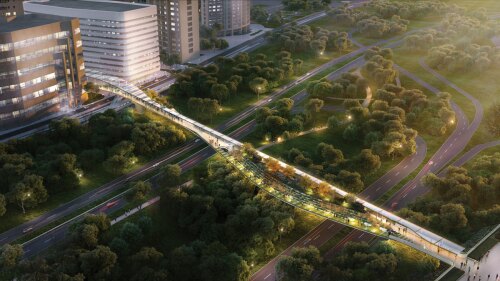- Prospects for relatively rapid redevelopment.
- “Social capital"—strong interest from local businesses and community leaders.
- Available buildings boasting “good bones,” especially those appropriate for incubating small businesses.
- Proximity to residential neighborhoods.
- Potential for multimodal street and transit infrastructure.
Related Content: Building Blocks: The Better Block Movement Demonstrates the Vitality that Could Be Brought to Struggling Neighborhoods
- A distinct identity that helps unify the block or corner. An abundance of trees always helps.
- A core group of 20 to 30 motivated stakeholders, including property owners, business owners, private and public sector community leaders, and artists and others representing cultural interests, including nonprofit organizations.
- Outreach to owners of vacated and occupied properties. “It’s like an open house for them,” says organizer Andrew Howard.
- Momentum. Organizers who do not act quickly to plan and hold an event expose themselves to losing critical momentum. “Don’t over-meet,” Roberts cautions. Initial meetings will likely be well attended, and it is essential to immediately seek volunteers for specific tasks.
- Promotion via social media—Twitter, YouTube, Facebook, and blogs—in addition to traditional communications channels.
- Permits for special events.
- Impact analysis and follow-up. This could include documenting gains in commercial activity, reductions in average traffic speeds, or growth in real estate–related inquiries. Cities frequently engage Team Better Block to help quantify the impact of events and propose beneficial changes to zoning regulations and transit policies.
Notes on the Mix
A primary aim should be activating portions of commercial structures facing sidewalks, including integrating these spaces with pop-up and related activities on the sidewalks and street fringes. Events can demonstrate subdividing possibilities for vacant and underused streetfront structures, including a wide variety of shops, gallery space, and arts and crafts functions, as well as amateur and professional musical and other arts performances.
Popular merchants include coffee shops and other food and beverage services. Beer gardens are generally a big hit with visitors, and no doubt help facilitate their interaction. Small, makeshift dog parks have also proved popular. Some events have cut costs by recycling wooden shipping and storage pallets to serve as makeshift shelving and seating.
Source: Team Better Block founders Jason Roberts and Andrew Howard.




